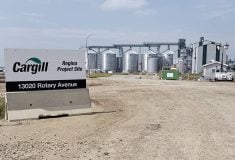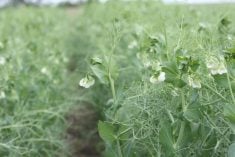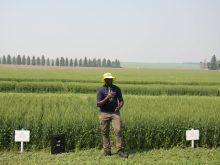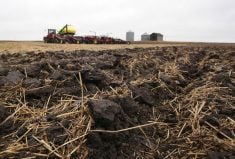MINNEAPOLIS — There is an idea, widely spread in the media, that agriculture must be fixed.
The standard narrative is that modern farming is destroying the atmosphere with greenhouse gas emissions. Therefore, farmers should stop using fertilizer, no longer raise livestock and grow only organic hempseed — or quinoa.
Related stories in this issue:
- Sustainability has a problem
- Regenerative agriculture resumes bottom-up approach
- Road to sustainable food systems needs patches
However, the storyline in which farmers are climate villains is slowly changing, says Michael Crinion, a dairy farmer from Lake Benton, Minnesota.
Read Also

Short rapeseed crop may put China in a bind
Industry thinks China’s rapeseed crop is way smaller than the official government estimate. The country’s canola imports will also be down, so there will be a lot of unmet demand.
“Last year at COP (the United Nations climate conference) was the first year that people realized that agriculture can be a solution to climate change … rather than being blamed for everything.”
Crinion, chair of U.S. Farmers & Ranchers for Action, which represents 700,000 American farmers, according to its website, was one of about 200 people who attended the Reuters Transform Food & Agriculture conference, held Oct. 7-9 in Minneapolis.
There has been a slight shift, in which farmers are now viewed as partners in solving the climate crisis, but food companies and governments are still putting demands on producers, said Kevin Burkum, chief executive officer of U.S. Farmers & Ranchers.
They’re expected to run a business, employ people, produce food, make a profit and solve many other problems.
“By the way, can you also work on GHG emissions, biodiversity, water quality and restore soil health? That’s a lot,” Burkum said.
Pilar Cruz, Cargill’s chief sustainability officer, also said the relationship between corporations and farmers has evolved.
Several years ago, Cargill took a “directive” approach to sustainability.
“We would go to farms and farmers and show the program … and say, ‘here’s what we think you need to do,’ ” said Cruz.
Cargill quickly learned that prescribing solutions is a mistake.
Instead, agri-food companies need to co-create sustainability programs with farmers.
“We know what works in Brazil for soy production, doesn’t work in Nebraska for a corn farmer, doesn’t work in Australia for canola producers,” she said.
“Everybody (now) knows that collaboration is a must.”
It’s possible that a similar lesson has been learned in Canada. In December 2020, the federal government released an ambitious plan to cut nitrous oxide emissions from fertilizer by 30 per cent by 2030.
Agriculture Canada encouraged farmers to grow cover crops, adopt rotational grazing for cattle and change nutrient management practices to achieve the 30 per cent reduction.
That didn’t go over well with farmers, especially those on the Prairies, who said cover crops don’t make sense in a dry climate with a short growing season.
As well, there is limited evidence that cover crops actually cut emissions.
A 2023 paper from Agriculture Canada struck a different tone.
In a “What We Heard” report, federal agriculture minister Marie Claude Bibeau said many farmers are already following nutrient management practices that reduce emissions.
“We are committed to working with all farmers … to develop an approach to meet the fertilizer emissions reduction target,” she wrote.
The tone and language may have changed since 2020, but the expectations remain.
Agri-food, ingredient and food companies have set aggressive targets to cut greenhouse gas emissions by 2030.
A rapid transition to climate smart agriculture is needed to achieve those goals, but farmers need incentives and structures that will support a change in practices.
“If it’s going to work, it’s going to require policy changes, it’s going to require changes in financial instruments (who will pay?),” Burkum said.
“It’s going to require involvement by NGOs and buy-in from the farmer.”
The buy-in piece is a thorny problem.
Most people do care about the health of the planet. Nonetheless, they care about things that they see every day, such as wetlands, creeks, grasslands, forests and wildlife in their region of North America.
Programs that conserve habitat and natural lands is an easier sell than cutting emissions, said Brett Bruggeman, chief operating officer of Land O’ Lakes, a farmer-owned co-operative in Minnesota.
“Farming for carbon credits, that’s not tangible (or visible).”
There are reasons why farm groups may want to sit on the sidelines and not partner with agriculture and agri-food corporations on climate solutions, but that decision does come with risks.
If producers aren’t part of the conversation, governments and companies could impose solutions upon the ag industry.
“Probably the biggest thing is for farmers to be represented at the table,” said Crinion, the dairy farmer from Minnesota.
“If you’re not at the table, you’re on the menu.”
















